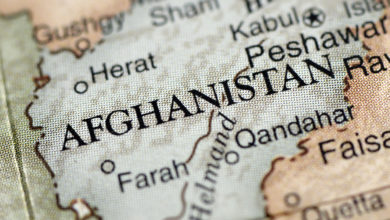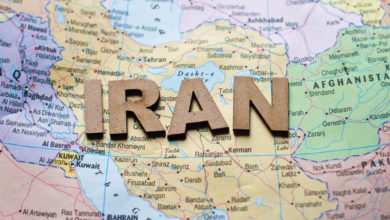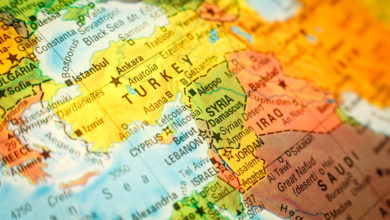Trump’s Incoherent Syria Policy Is About To Be Tested
That assumes, of course, that he has one.
Donald Trump’s comments about Syria during a joint press conference today with King Abdullah of Jordan gave us no insight into the Trump administration’s policy toward Syria. That assumes, of course, that it has one.
But it did give us a potentially alarming glimpse into the haphazard way policy is formed in Trumpland.
And the actions he takes or declines to take in response to the latest Assad atrocity will tell us a lot about whether Trump is willing to take lock horns with Russia when they are on different sides of a serious foreign policy dispute.
Recent statements coming out of the Trump administration strongly suggested that the United States had softened its “Assad must go” policy. Secretary of State Tillerson said last week that “the longer-term status of President Assad will be decided by the Syrian people.”
On the same day that Tillerson made that statement, UN Ambassador Nikki Haley said, “our priority is no longer to sit there and focus on getting Assad out.” Haley sounded the same theme on one of the Sunday talk shows, saying that Assad “is not going away.”
If these statements reflected the direction of the Trump administration’s policy, it appears that pictures coming out of Syria have caused Trump to change it:
“That was a horrible, horrible thing. And I’ve been watching it and seeing it, and it doesn’t get any worse than that. And I have that flexibility. And it’s very very possible, and I will tell you, it’s already happened, that my attitude towards Syria and Assad have changed very much.”
The pictures coming out of Syria are indeed gruesome and heartbreaking. But they are not new, except insofar as they document the horror of this particular attack, as opposed to all of the other disgusting attacks on civilians that preceded it.
God knows we have seen enough horrific pictures of child casualties in the Middle East. Al Jazeera practically put itself on the map by running non-stop footage of Palestinian children caught in the crossfire. Israel regularly leads journalists to scenes of devastation in order to document atrocities conducted by Hamas. Syria itself has been the source of heartbreaking photos for years, including previous chemical attacks and dead or dazed child refugees. And no doubt the misdirected American bombs that last month killed as many as 200 Iraqi civilians, including many children, produced enough gruesome photographs to break anyone’s heart.
But one hopes that the leader of the free world will not base policy on an emotional reaction to heartbreaking pictures. Or to put it differently, why base policy on this particular set of heartbreaking pictures, and not those that came before it?
All of that assumes, of course, that Trump actually has a policy toward Syria. His past and present statements on Syria suggest that he doesn’t.
In June of 2013, after the U.S. concluded that Assad had used chemical weapons against his own people, thus crossing Obama’s “red line,” Trump was insisting that the United States stay out of it. He tweeted:
“We should stay the hell out of Syria, the ‘rebels’ are just as bad as the current regime. WHAT WILL WE GET FOR OUR LIVES AND $ BILLIONS?ZERO”
Two months later, when Obama announced his decision not to attack, Trump crowed about how Obama’s weakness saved us from doing something stupid:
“President Obama’s weakness and indecision may have saved us from doing a horrible and very costly (in more ways than money) attack on Syria!”
In an official White House statement issued yesterday, Trump said exactly the opposite:
“Today’s chemical attack in Syria against innocent people, including women and children, is reprehensible and cannot be ignored by the civilized world. These heinous actions by the Bashar al-Assad regime are a consequence of the past administration’s weakness and irresolution. President Obama said in 2012 that he would establish a “red line” against the use of chemical weapons and then did nothing. The United States stands with our allies across the globe to condemn this intolerable attack.”
So, what is Trump’s position on Syria? Did Obama’s “weakness and indecision” save us from making a terrible mistake in 2013, or did “doing nothing” lead to a horrific massacre? Is the Trump administration going to leave it to the Syrian people to choose their leader, or is the United States going to use military force to execute an “Assad must go” policy?
Nobody knows. Trump hides his lack of a coherent policy behind his stated belief that we should not telegraph our military moves. But refusing to telegraph military actions is not an excuse for the lack of a policy that our government and our people can understand and get behind.
While we don’t know Trump’s policy toward Syria, or even if he has one, we do know that whatever he chooses to do, or not do, will say a lot about his willingness to confront Russia.
Russia, unlike the United States, actually has a policy toward Syria. Russia supports Assad and is actively assisting him to hold on to power.
If Trump decides he must punish Assad, or perhaps even take military action to bring about regime change, that would put us in sharp conflict with Russia. It could trigger a proxy war, or worse.
If Trump decides not to take any decisive action against the Assad regime in response to its latest use of chemical weapons, he will be accused of doing exactly the same thing he has accused Obama of doing, declaring that a red line has been crossed and doing nothing about it. When asked today whether Syria’s chemical attack crossed a red line for him, Trump said, “that crosses many, many lines, beyond a red line. Many, many lines.”
In addition to the risk that he will look like a toothless tiger, doing nothing in response to Assad’s crossing “many lines beyond a red line” would add weight to the argument that Russia is holding something over Trump’s head to make him compliant.
A third alternative is that Trump might work out some kind of smoke-and-mirrors deal with the Russians that walks a fine line between propping up Assad and seeking his ouster.
This last, I think, is the most likely outcome.
It’s Trump’s only way out of the box he’s put himself in.




